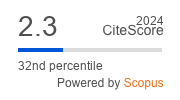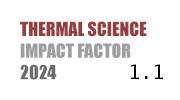THERMAL SCIENCE
International Scientific Journal
TIME SERIES PREDICTION OF ROCK BURST BASED ON DEEP LEARNING: A CASE STUDY
ABSTRACT
Rockburst is a common mining hazard causing dynamic damage to coal and rock masses, posing significant threats to personnel and equipment safety. Various analytical methods exist to assess impact risks, with microseismic monitoring systems playing a pivotal role due to their stability, dynamism, and continuity. This approach utilizes a dual residual connection and a deeply connected stack architecture to facilitate seasonal-trend predictions and enhance their interpretability in time series prediction tasks using a purely deep learning model. The time-frequency and total energy of microseismic events are predicted using the proposed approach, and a comparative experimental study is conducted on the time window lengths of M = 7 days and M = 4 days. The results indicate that the proposed approach effectively predicts the evolution trend of microseismic event frequency, with minor discrepancies between the predicted results and the actual monitoring values, showing its excellent prediction performance and generalization capability.
KEYWORDS
PAPER SUBMITTED: 2024-10-03
PAPER REVISED: 2024-11-15
PAPER ACCEPTED: 2024-11-26
PUBLISHED ONLINE: 2025-06-01
THERMAL SCIENCE YEAR
2025, VOLUME
29, ISSUE
Issue 2, PAGES [1319 - 1324]
- Dou L. M., et al., Theory and Technology of Rock Burst Prevention, China University of Mining and Technology Press, Xuzhou, China, 2001
- Lu, J. G., et al., Microseismic Predicting Coal Bump by Time Series Method, Journal of China Coal Society, 35 (2010), 2, pp. 2002-2005
- Pei, Y. Y, et al., Time Series Prediction of Microseismic Energy Level Based on Feature Extraction of 1-D Convolutional Neural Network for Feature Extraction, Journal of Engineering Science, 43 (2021), 3, pp. 1003-1009
- Wang, J. Z., et al., The ARMA Model Identification Using Particle Swarm Optimization Algorithm, International Conference on Computer Science and Information Technology, 2008 (2008), 4, pp. 223-227
- Bogl, M., W., et al., Visual Analytics for Model Selection in Time Series Analysis, IEEE Transactions on Visualization and Computer Graphics, 19 (2021), 2, pp. 2237-2246
- Buendia, R. J. M., et al., A Disease Outbreak Detection System Using Autoregressive Moving Average in Time Series Analysis, Proceedings, 6th International Conference on Information, Intelligence, Systems and Applications (IISA), Corfu, Greece, 2015, Vol. 1, pp. 1-5
- Qin, C. K., et al., Time Series Prediction Method of Microearthquakes in Coal Mine Based on Mode Decomposition and Deep Learning, Journal of China Coal Society, 49 (2019), 2, pp. 3781-3797
- Cao, A., et al., Physical Index and Data Fusion-Driven Method for Coal Burst Prediction in Time Sequence, Journal of China Coal Society, 48 (2023), 2, pp. 3659-3673
- Xu, Y., et al., Deep Transfer Learning for P-Wave Arrival Identification and Automatic Seismic Source Location in Underground Mines, International Journal of Rock Mechanics and Mining Sciences, 182 (2024), 3, ID105888
- Oreshkin, B. N., et al., The N-BEATS: Neural Basis Expansion Analysis for Interpretable Time Series Forecasting, ICLR2020, doi.org/10.48550/arXiv.1905.10437, 2019
- Swanson, D. A., et al., A Note on the Measurement of Accuracy for Subnational Demographic Estimates, Demography, 37 (2000), 4, pp. 193-201
- Vu, Tin, et al., Using Deep Learning for Big Spatial Data Partitioning, ACM Transactions on Spatial Algorithms and Systems (TSAS), 7 (2020), 6, pp. 1-37
- Amato, F., et al., A Novel Framework for Spatio-temporal Prediction of Environmental Data Using Deep Learning, Scientific Reports, 10 (2020), 3, ID22243
- Krichen, M., Generative Adversarial Networks, Proceedings, 14th International Conference on Computing Communication and Networking Technologies (ICCCNT), Delhi, India, 2023, Vol. 4, pp. 1-7
- Yang, L., et al., Diffusion Models: A Comprehensive Survey of Methods and Applications, ACM Computing Surveys, 56 (2022), 5, pp. 1-39

